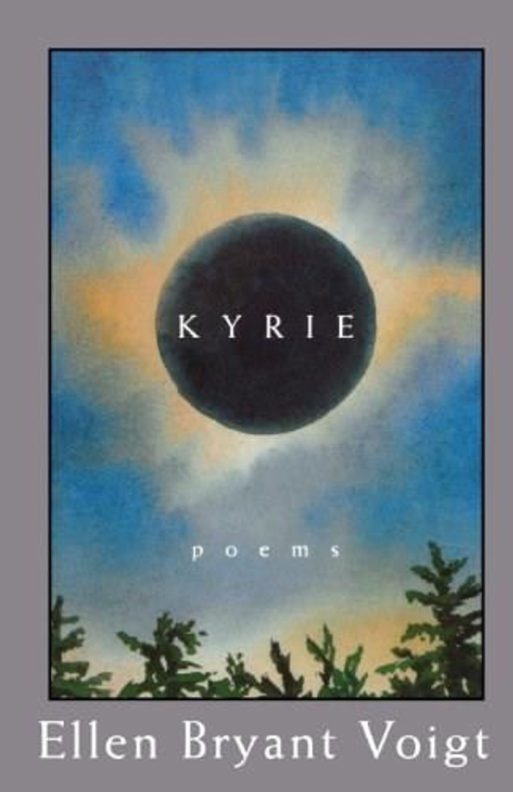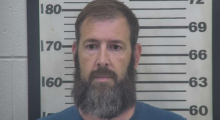 Few may be familiar with the Influenza of 1918. Although it took half a million lives in the U.S. and 25 million worldwide, most of whom were young adults, the pandemic somehow eludes due emphasis in our history books. One sees why. As an epilogue to the First World War, what else could it do but linger submissively in the footnotes of a history rutted with trenches and remembered only by a lost generation? Still, the “Spanish Flu” deserves no less than its own memorial. In Kyrie, Ellen Bryant Voigt enshrines those who never recovered from the virus in perhaps the most memorable and most humanizing form possible: poetry.
Few may be familiar with the Influenza of 1918. Although it took half a million lives in the U.S. and 25 million worldwide, most of whom were young adults, the pandemic somehow eludes due emphasis in our history books. One sees why. As an epilogue to the First World War, what else could it do but linger submissively in the footnotes of a history rutted with trenches and remembered only by a lost generation? Still, the “Spanish Flu” deserves no less than its own memorial. In Kyrie, Ellen Bryant Voigt enshrines those who never recovered from the virus in perhaps the most memorable and most humanizing form possible: poetry.
Her book-length sonnet sequence centers on the losses of a rural town whose name goes unmentioned, perhaps to emphasize the universal experience based in this intimate, enclosed setting. A few recurring narrative threads weave in and out of focus: a midwife and/or nurse’s experiences with dying neighbors, a boy’s life after his mother succumbs to the flu, a schoolteacher who must endure a classroom of sick children, and a collection of a soldier’s letters written to his sweetheart “Mattie”. A never-ending cycle, men bury their wives and contract the flu soon thereafter. Spiritual upwellings, both of praise and of despair, inspire the afflicted to look towards a Christian God for hope or mercy. In the epilogue, we see what the world looks like after so much human loss: a single horse grazing in a wild, teeming field. Nature, “the world our world is nestled in,” returns to itself (16).
Ellen Bryant Voigt enshrines those who never recovered from the virus in perhaps the most memorable and most humanizing form possible: poetry.
After a few readings, one could (and should) trace these various skeins of plot. But unraveling the braid may clarify each individual story at the expense of the beautifully tangled song of common tragedy—the composite voice of woe reverberating through each part of the whole. (The schoolteacher and midwife, for instance, may be the same person.) It doesn’t matter exactly who is speaking so much as what they’re saying—these experiences could be anyone’s. That’s what makes them as terrifying as they are profound.
And for whom poetry is not an everyday routine, don’t let the word “sonnet” discourage you from reading Kyrie. The speakers are everyday people, their language limpid and colloquial. No heady metaphorical flights or witty Shakespearean rhetoric requires you to blow the dust off the poetry guide left untouched since high school. Immediately gratifying, these poems intend to be understood by the same type of person whose voice they capture, and reading them often feels like reading a novel, only one heightened by graceful rhythm and lyrical richness. For every tragedy recorded, Voigt promises the reader pleasure through every line of delicate verbal music.
It doesn’t matter exactly who is speaking so much as what they’re saying—these experiences could be anyone’s. That’s what makes them as terrifying as they are profound.
Though remarkable as aesthetic works of art, Kyrie more importantly illuminates a forgotten episode of staggering loss and of great human trial. Anyone who endures the end of life by illness—whether their own or that of a loved one—can look to these poems for expressions of feelings no other poem captures in quite the same way, with quite the same eloquence. Voigt channels voices from the past, but when spoken through your voice, they draw you in to a collective grief we must, as historians of our communities, remember and redeem.
More from Lending Insight:
- Book Review: Wild by Cheryl Strayed
- A Shrine for the Lost in The Man with Night Sweats
- Book Review: “Sacred Dying” by Megory Anderson

 “Kyrie” by Ellen Bryant Voigt
“Kyrie” by Ellen Bryant Voigt



 Funeral Home Owner Chris Johnson Spending Halloween in Jail
Funeral Home Owner Chris Johnson Spending Halloween in Jail
 Our Monthly Tip: Toast a Loved One with a Personalized Glass
Our Monthly Tip: Toast a Loved One with a Personalized Glass
 My Cousin’s Death Taught Me the Meaning of Life
My Cousin’s Death Taught Me the Meaning of Life















Thanks for such an interesting post Christopher! I had no idea how serious the pandemic was.
Report this comment